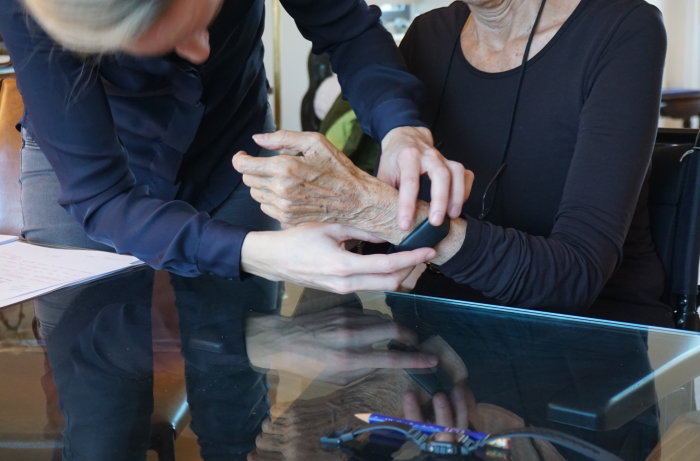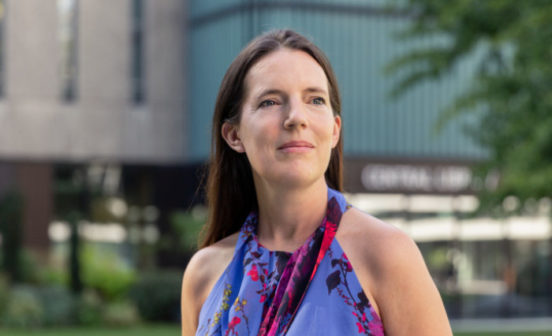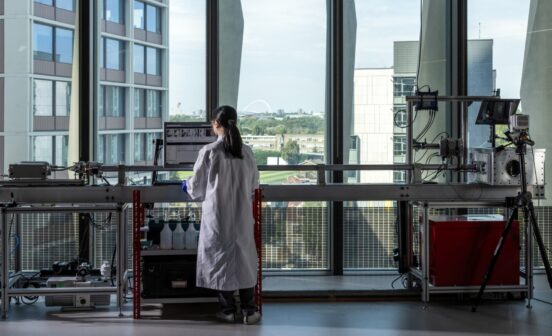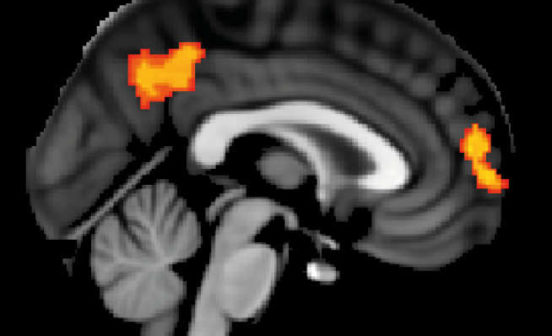DeviceInnovationPreventionTherapeutic OnTrack – Empowering stroke survivors in their own recovery

It was Christmas time three years ago when Amy experienced a stroke. Amy was enjoying her retirement, having spent her career working in publishing. But the stroke took away her independence, paralysing her left arm such that she needed full-time care. This isn’t an uncommon outcome: some 80% of people experience difficulty using their arms after a stroke.
Amy spent the next four months in hospital, the beginning of a long road to recovery.
When Amy returned home she needed full-time care and regular rehabilitation sessions. But with an overstretched health system burdened by an ageing population, Amy wasn’t able to access the recovery support she required at home.
Amy joined a local network called LEGS (Local Exercise Groups for Stroke), a charity that offers physiotherapy-led rehabilitation for stroke survivors. It was here that she met Ella Gibbs and Gianpaolo Fusari from Helix Centre, who were working on a solution to help people like Amy.
“Stroke is the leading cause of disability in the UK, so we were really motivated to work in this area and find out where we could use design to make a difference to people’s lives,” says Gianpaolo, senior designer at Helix, an innovation lab for healthcare.
“We wanted to learn more about what happens both in the hospital and in the community, so we shadowed teams of therapists on wards, linked up with various charities and also observed rehabilitation sessions in the home environment.”
It was the latter scenario where Gianpaolo realised there was a major gap to be filled.
“We followed early-support discharge teams, the therapists who go to people’s homes five days a week for 45 minutes to do intensive therapy,” he says.
“It’s a really great service, but only about 20-30% of eligible people receive it because there aren’t enough therapists to go around.”
The team ran workshops with patients and healthcare professionals to further flesh out people’s needs after stroke and better understand their feelings. It became clear that the lack of help at home was a real roadblock in people’s recovery.
“People felt unsupported after their formal rehabilitation programmes ended,” says Ella, physiotherapist and clinical researcher. “They were afraid to do some exercises at home for fear of injuring themselves. And they didn’t have any way of monitoring their own progress. The same goes for the therapists, who couldn’t see whether their patients were sticking to their exercises between sessions.”
Working with some 200 patients and healthcare professionals like Amy, the Helix team created a digital tool – OnTrack Rehab – that enables self-management of stroke recovery.
This platform couples a smartwatch app with tailored coaching to help people own their rehabilitation journey at home. The app works like a step counter. It tracks minutes of arm activity through an algorithm developed specifically for stroke survivors, whose arm movement differs from healthy individuals’.
“That’s the ‘secret sauce’ of our innovation,” says Gianpaolo.
The device displays these minutes to the user, alongside a daily goal and what they achieved the previous day. The app also sends the user tailored messages – depending on how active they are – to motivate and encourage them.
“It’s great – it reminds you to use your hand,” patient says. “I think you need constant reminding that it’s there and needs to be used. I think it’s helped me to be more aware of that.”
Despite the years of research and development so far, it’s still early days for OnTrack. The team has more to do to refine the product and its features. They also need to demonstrate its impact on rehabilitation outcomes at scale. But if trials support its use, Gianpaolo has high hopes for the platform.
The OnTrack team is excited for the road ahead and to helping many more people recover from stroke.
The study was supported by the NIHR Imperial BRC Surgery and Surgical Technology Theme.
This story is an extract of a blog article written by Justine Alford, and you can read the full story here. © Imperial College London.





